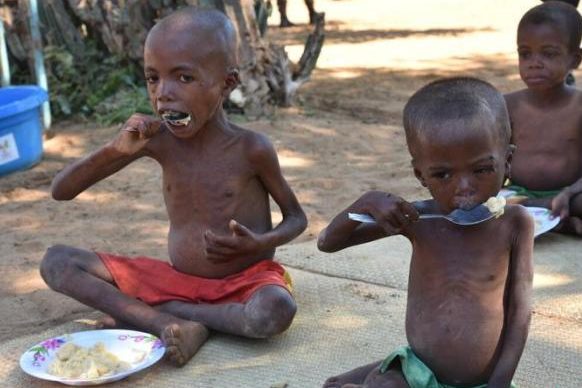May 12 2021 The World Food Programme and two major United Nations agencies issued a serious warning on the 11th local time that hunger is growing in southern Madagascar, more and more lives are at risk, calling on the international community to pay attention to this neglected humanitarian crisis, and take action to expand food aid and agricultural livelihood support to avoid the worst-case scenario.
Some 1.14 million people in southern Madagascar face high levels of sudden food insecurity, of which nearly 14,000 are at the “catastrophic” level of sudden food insecurity (the “catastrophic” level is the highest of the five levels of the Integrated Classification of Food Security). This is the first time that Madagascar has been found to be in this situation since the introduction of the Integrated Classification of Food Security in 2016.
As many as three quarters of the population of the worst-hit Amboasary Atsimo region face dire consequences as a result of drought, sandstorms, animal and plant pests and diseases, and the Coronavirus outbreak. The alarmingly high global rate of sudden malnutrition, which has exceeded 27 per cent, means that children will suffer irreversible harm.
“The situation was so bad that the children starved to death. I met a mother whose 8-month-old child looked only 2 months old and whose older child had died. Amer Daoudi, Senior Operations Director of the World Food Programme, said during a recent visit to Sihanamaro, one of the worst-hit areas.
The once-in-a-four-year drought lasted three years, leading to crop failures and the lack of access to food. Previously, years of deforestation had caused soil erosion, which had been exacerbated by climate change and damaged the environment. Unprecedented sandstorms have turned large tracts of arable land into wasteland.
As the livelihoods of vulnerable families are severely lost and access to food is reduced, providing seeds, tools and other necessary inputs to agricultural communities is essential to initiating local food production, generating income and building resilience. Such support for agriculture and rural livelihoods can complement emergency food and prevent families from selling means of production, such as agricultural equipment and even cooking utensils, for survival.
It is reported that Madagascar’s humanitarian food reserves are being reduced. The World Food Programme is delivering supplies, but roads to the worst-hit areas are hampered by weak infrastructure and road networks. All flights to the island nation have been suspended to prevent and control the new outbreak, meaning vital humanitarian supplies can only be delivered by boat.
Since October 2020, the Government and the World Food Programme have provided assistance to 750,000 people, but the food insecurity crisis has been rapidly intensifying and current support is insufficient to offset the effects and risks of famine. The World Food Programme urgently needs to raise $74 million over the next six months to avert a disaster in southern Madagascar.



